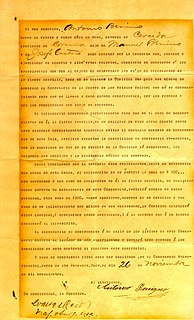 W
WYellow fever is a viral disease of typically short duration. In most cases, symptoms include fever, chills, loss of appetite, nausea, muscle pains particularly in the back, and headaches. Symptoms typically improve within five days. In about 15% of people, within a day of improving the fever comes back, abdominal pain occurs, and liver damage begins causing yellow skin. If this occurs, the risk of bleeding and kidney problems is increased.
 W
WOn 20 January 2016, the health minister of Angola reported 23 cases of yellow fever with 7 deaths among Eritrean and Congolese citizens living in Angola in Viana municipality, a suburb of the capital of Luanda. The first cases were reported in Eritrean visitors beginning on 5 December 2015 and confirmed by the Pasteur WHO reference laboratory in Dakar, Senegal in January. The outbreak was classified as an urban cycle of yellow fever transmission, which can spread rapidly. A preliminary finding that the strain of the yellow fever virus was closely related to a strain identified in a 1971 outbreak in Angola was confirmed in August 2016. Moderators from ProMED-mail stressed the importance of initiating a vaccination campaign immediately to prevent further spread. The CDC classified the outbreak as Watch Level 2 on 7 April 2016. The WHO declared it a grade 2 event on its emergency response framework having moderate public health consequences.
 W
WAedes aegypti, the yellow fever mosquito, is a mosquito that can spread dengue fever, chikungunya, Zika fever, Mayaro and yellow fever viruses, and other disease agents. The mosquito can be recognized by white markings on its legs and a marking in the form of a lyre on the upper surface of its thorax. This mosquito originated in Africa, but is now found in tropical, subtropical and temperate regions throughout the world.
 W
WCarlos Juan Finlay was a Spanish and Cuban epidemiologist recognized as a pioneer in the research of yellow fever, determining that it was transmitted through mosquitoes Aedes aegypti.
 W
WThe evolutionary origins of yellow fever most likely came from Africa. Phylogenetic analyses indicate that the virus originated from East or Central Africa, with transmission between primates and humans, and spread from there to West Africa. The virus as well as the vector Aedes aegypti, a mosquito species, were probably brought to the western hemisphere and the Americas by slave trade ships from Africa after the first European exploration in 1492.
 W
WMajor Walter Reed, M.D., U.S. Army, was a U.S. Army physician who in 1901, led the team that confirmed the theory of the Cuban doctor Carlos Finlay that yellow fever is transmitted by a particular mosquito species, rather than by direct contact. This insight gave impetus to the new fields of epidemiology and biomedicine, and most immediately allowed the resumption and completion of work on the Panama Canal (1904–1914) by the United States. Reed followed work started by Carlos Finlay and directed by George Miller Sternberg, who has been called the "first U.S. bacteriologist".
 W
WA Short Account of the Malignant Fever (1793) was a pamphlet published by Mathew Carey about the outbreak of the Yellow Fever epidemic Yellow Fever Epidemic of 1793 in Philadelphia in the United States. The first pamphlet of 12 pages was later expanded in three subsequent versions. Local black leaders Absalom Jones and Richard Allen thought that Carey's account did not give sufficient credit to black residents who volunteered as nurses during the outbreak, and published a counter-narrative, “A Narrative of the Proceedings of the Black People During the Late Awful Calamity in Philadelphia (1794). Carey agreed with their assessment and revised his pamphlet a fourth time to present that view.
 W
WJohn Perry Wall (1836-1895) was a physician, and mayor of Tampa, Florida (1878–1880). In 1859 he was a surgeon at Chimborazo Hospital in Virginia, serving Confederate soldiers from Florida during the American Civil War. On a visit to Brooksville, Florida he married Pressie Eubanks, the nineteen-year-old daughter of a wealthy planter.
 W
WThe Yellow Fever Commission was a research team of the United States Army which researched treatment for yellow fever.
 W
WDuring the 1793 yellow fever epidemic in Philadelphia, 5,000 or more people were listed in the official register of deaths between August 1 and November 9. The vast majority of them died of yellow fever, making the epidemic in the city of 50,000 people one of the most severe in United States history. By the end of September, 20,000 people had fled the city. The mortality rate peaked in October, before frost finally killed the mosquitoes and brought an end to the epidemic in November. Doctors tried a variety of treatments, but knew neither the origin of the fever nor that it was transmitted by mosquitoes.
 W
WThe Yellow Fever in Buenos Aires was a series of epidemics that took place in 1852, 1858, 1870 and 1871, the latter being a disaster that killed about 8% of Porteños: in a city where the daily death rate was less than 20, there were days that killed more than 500 people. The Yellow Fever would have come from Asunción, Paraguay, brought by Argentine soldiers returning from the war just fought in that country, having previously spread in the city of Corrientes. As its worst, Buenos Aires population was reduced to a third because of the exodus of those escaping the scourge.